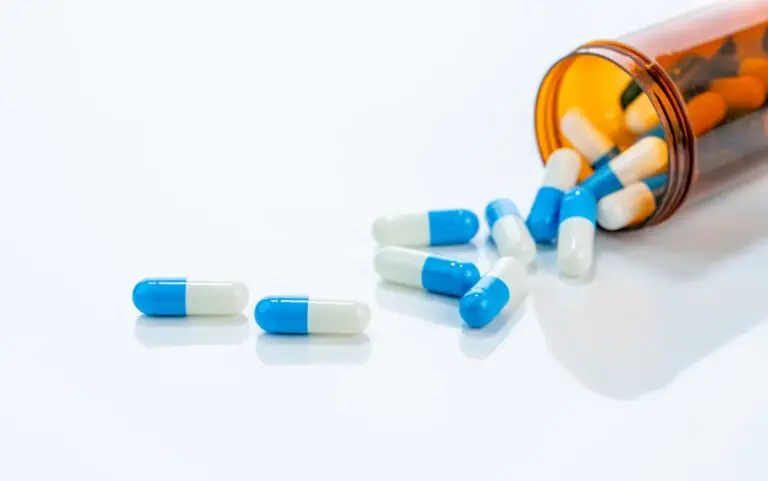Extreme Rehab: Inside the World’s Most Radical Drug Clinic
Dr Andre Waismann is rewriting the rulebook for rehab, with incredible success. (Nick Harding investigates)
Published in: The Independent, Thursday, 2 October 2008
Miracle man? Dr Andre Waismann argues that opiate addiction is a medical problem and that his fast-track neural treatment works far better than counseling and methadone. Drug agencies disagree
Dr. Waismann explains his vision. “My goal,” he says, “is that any drug addict in the world will one day be able to turn up at their local general hospital and say, ‘good evening, I am hooked on opiates’. They will then lie down on a treatment table and be cured quickly before going home healthy. It will be as simple as taking a trip to the dentist.”
Waismann’s clinic, based in Barzilai Medical Centre in the south of Israel, offers a controversial solution for drug addicts dependent on opiates such as heroin and morphine, as well as people hooked on painkillers containing the opiate codeine, such as Vicodin. Waismann and his team “clean” them of their addiction. The vomiting, nausea, stomach cramps and fever associated with opiate withdrawal are bypassed and the patient, who is sedated during the process, awakes with no cravings, having gone through detoxification. For the next 10 months to a year they take regular pills to counteract the effects of any heroin or opiate they may take and, according to Waismann, become fully functioning members of society again. He says he has successfully treated 11,000 patients over 14 years, and refers to his technique as ANR, or accelerated neuro-regulation. He says it reverses both the physical and the psychological dependency on the drug.
His goal, to have his techniques taken up globally, is driven by a singular philosophy that has made him unpopular with many involved in conventional drug misuse treatment programmers. He believes addiction is a medical problem, not a psychological one and that, on the whole, humans have an innate desire to be healthy, even those who inject heroin. He argues that psychological problems arise because of addiction, so if you can beat the addiction, it is easier to overcome the mental health problems associated with it. Conventional wisdom dictates the opposite, that psychological problems are primarily a catalyst for drug misuse, and that you must treat these in tandem with the dependency, often, in the case of methadone prescription, simply switching the addiction from one substance to another. It’s a classic chicken-and-egg argument; and in the UK, the chicken is sitting on a nest woven from almost £400m of taxpayers’ money allocated for drug treatment.
Waismann believes his methods offer the most humane form of treatment for all opiate addicts, whether hooked on heroin or painkillers, and he accuses drug treatment policymakers in the UK, who favour counselling-based treatment and methadone substitution, of backward thinking.
He states: “It doesn’t matter whether it is a heroin addict who has been using for 20 years or a businessman who started taking codeine for a back problem and got hooked, they develop the same medical illness, which is dependency. You can try the drug once or twice, maybe three or four times, and initially you can chose to use or not to use, but at some point you develop dependency and from that point on if you do not use you will feel terribly ill. As a consequence, users develop severe psychological problems. Convention says addicts have psychological problems to begin with and because of those they become drug addicts. It is not the case. Dependency is a central nervous system disorder that is reversible. Addicts are not mad nor are they people with addictive personalities. They are trapped by a body and mind that constantly craves opiates, and can be healed without methadone, without psychological counselling and without being locked away in rehabilitation centres.”I do not claim to be a genius – I am just a doctor who is tired of seeing addicts being tossed on to the sidelines or fed methadone to keep them under control.”
Born in Brazil, Waismann trained as an anaesthesiologist. But it was in 1985, during his military service in the Israeli army, that he realised the pervasive nature of drug addiction, after witnessing how drugs administered to wounded soldiers could turn into narcotic addiction.
“In a war zone, when someone is badly injured, you cannot do much, so you give them strong painkillers,” he says, “They become dependent. They go home and they develop psychiatric problems, are given psychiatric drugs and then they become zombies, there are thousands of ex-servicemen in situations like that.” In biological terms, there is no difference between these war veterans, painkiller-addicted businessmen, morphine-addicted hospital patients with chronic illness and heroin-addicted prostitutes. The mechanics of their dependency are the same.
Opiates create their alluring effects by hooking on to specific areas on brain cells called opiate receptors. This process produces an effect like pleasure, or reward, and pain relief. Waismann explains: “Our bodies produce natural opiates – endorphins. But when you start using heroin, your endorphin levels go down because your brain doesn’t need to produce it any more. The system collapses. Your dependency on heroin increases until the day you no longer produce endorphins and you become totally dependent on heroin. The more you put in your brain, the more receptors your brain produces and the more receptors you have, the more heroin you need. Eventually you reach the point where the amount of heroin that you need to feel high is the amount that kills you.”
At his ANR clinic, Waismann and his team administer drugs commonly used by anaesthetists to clear the patient’s receptors of opiates and then block them with other drugs that render them impervious to opiates. Each patient is screened to ascertain their level of dependency and is then sedated. The drugs are administered and constantly monitored. The patient is blissfully unaware of the withdrawal process, symptoms that are usually so uncomfortable for addicts. After the treatment, they continue taking a regular dose of the “blocking” medication Naltrexone for up to year, ensuring that any subsequent opiate use will have no effect. “The procedure takes less than 36 hours and afterwards the patient is no longer dependent and does not have cravings,” says Waismann proudly. “This is what modern medicine can achieve.”
The anecdotal evidence and glowing reports of the treatment’s effects are compelling. But if Waismann’s method, and other similar rapid detoxification programmes are the wonder cures they claim to be, then why are they not being offered routinely to all opiate addicts?
Israel has been at the forefront of rapid detox under anaesthesia, and, since he first developed the treatment, Waismann has travelled the globe to raise awareness. His crusade started in Australia 12 years ago when a magazine, The Australian Women’s Weekly, flew a 25-year-old heroin addict, Joanne Frare, and her brother, Peter, to be cured at Waismann’s clinic in Tel Aviv. There was so much interest in the story that Waismann agreed to fly to Australia to share his groundbreaking medical procedure with public health authorities there. When he arrived, the magazine reported: “He had just discharged four more Australians from his clinic and since Joanne Frare’s treatment, more than 25 other Australians have followed suit. All are healthy, most are home, and to a man – and woman – they are no longer addicted to the curse that is heroin.” In Lismore, Frare’s home town, more than 300 people, including addicts, families of users, doctors, politicians and business leaders, crammed in to the local workers’ club to hear Waismann.
Since then he has visited India, Cyprus, Indonesia, Brussels, Italy, Croatia and Kazakhstan and his methods have been adopted in several clinics across the world. He says his crusade is moral, not financial. His rallying cry in the countries he visits is the same as the message he has for the UK. “Don’t send me your patients, they are already coming. Send me your doctors and I will teach them.”
The UK has spent millions on research into drug addiction over the years but nothing has changed in the level of care for patients. Medicine however, has changed. So how come, with the biotechnology we have now that allows us to know what is happening in the brain and how dependency works, we cannot help those patients to have better more humane treatment?”
Yet, despite repeated efforts to expound his philosophy in the UK and a recent meeting with shadow justice minister David Burrowes, his main claim to fame in this country so far is as the man who nearly treated Amy Winehouse. Waismann made headlines in May when it was reported he had been approached by the tragic singer’s family (though Winehouse’s management subsequently denied the report). Waismann is typically discreet on the subject. “I do not comment on specifics, but was in touch with the family of a British celebrity. I was told, ‘We are doing fine, we are controlling it, we don’t need your help.’ If they are trying to control this person’s dependency with methadone or any other heroin substitute they are not helping, they are prolonging the illness. I have treated many famous people and many politicians and businessmen. For every one of them you have hundreds of other people who are not famous.
“The media concentrates on the celebrities, but there are many people dying because they are not being given proper treatment.”
Adam Catalove is a 31-year-old morphine addict. He was prescribed the painkiller at the age of 20 after radical surgery to repair his collapsed lungs resulted in nerve damage that left him in excruciating pain. If Catalove was in a car that drove over a stone, waves of pain would rip through his body. He became dependent on his medication, and after eight years did not know whether he needed the morphine to control the pain or whether he needed the morphine just because he needed the morphine.
He became a zombie, sitting in a chair in his parent’s home watching his life slip away through the glazed eyes of an addict. Unlike Winehouse, Catalove did not have the luxury of choice when he first took the narcotic he became dependent on, but he became an addict just the same. His father, Simon Catalove, a 69-year-old businessman from Scotland who emigrated to Israel before Adam was born, cared for his son.
Simon Catalove says, “Adam ended up on 165mg of morphine a day. He hadn’t slept in a bed for eight years, it was too painful for him. Instead, he spent his days in a reclining armchair. Eventually he was partly paralysed and in a wheelchair. Three years ago we started reducing his medication and got him moving again on walking sticks but he still needed 100mg of morphine a day and he was dependent. If he went a day without his dose he would start withdrawal symptoms. After all these years you can’t suddenly give that up.”
If Adam Catalove had been living in Britain, the next step would have possibly been a detoxification programme, maybe as an in-patient, or with methadone. Instead, earlier this month, his father took him to Waismann’s clinic.
“If someone told me two weeks ago that there was a treatment that would render him morphine-free in less than two days I wouldn’t have believed them,” says Simon Catalove now.
“Since the treatment his eyes have changed. He is a different guy. The main difference is his attitude. He is positive about life again. He’s even started driving.”
Such life-affirming plaudits are impressive, but they hold little credence with drug policymakers in the UK where accelerated opiate detoxification programmes like Waismann’s are often treated with disdain. Waismann argues this is because “the subject of drug-dependency treatment is not in the hands of proper doctor, it is decided by psychologists, psychiatrists and social workers”. Medical research counters that the process is at best highly selective in the people it works for and, at worst, dangerous.
Nevertheless, in the face of spiralling and domestic drug misuse treatment figures, a Holy Grail would be welcome. In England alone, the Home Office estimates that there are more than 332,000 problem drug users and around 75 per cent of these are heroin, methadone, morphine or other opiate users. In Scotland, there are 21,000 registered methadone users. According to the National Drug Treatment Monitoring System (NDTMS), of the 80,000 people who started drug treatment in 2006, a quarter failed to complete 12 weeks.
A study in Scotland found that only 8 per cent of users abstained 33 months after treatment. The majority cited heroin as the main problem.
The total cost to society of the misuse of drugs is estimated at £39bn a year in the UK. The budget for drug-addiction programmes in England this year is £398m. In 2006, the budget was boosted by £130m, but a subsequent report by the BBC found that rates of people emerging from treatment free of addiction had hardly changed. In response, then shadow home secretary David Davis wrote to the chair of the House of Commons Public Accounts Committee describing the investment as “massive failed expenditure”. The Department of Health countered that effective treatment takes between five and seven years and it was too early to see any significant results.
Despite the huge cost, according to guidelines issued by the National Treatment Agency for Substance Misuse, an arm of the NHS, rapid detox is not recommended and “oral methadone should be the maintenance treatment for the majority of heroin users”.
Policy spokesman Hugo Luck says: “Detoxification in itself should not be seen as a ‘cure’ for dependence, it carries a very high risk of relapse and should only be provided to drug misusers who have made an active choice to try to establish a drug-free lifestyle, are committed and informed about the process, and have a stable and supportive social situation following detoxification. The NTA is not aware of Dr Waismann or his ANR method, but in the UK, ultra-rapid detoxification for heroin and other opioid misuse is not a recommended treatment. Other forms of detoxification are recommended, but only within a package of care-planned drug treatment.”
The National Institute for Health and Clinical Excellence also studies treatments and recommends which ones should be provided by the NHS. Last year, it issued unequivocal guidelines on rapid detox which stated: “Ultra-rapid detoxification under general anaesthesia or heavy sedation (where the airway needs to be supported) must not be offered. This is because of the risk of serious adverse events, including death.”
The independent charity Drugscope acknowledges that there are some benefits to the method, but warns that a cautious, measured approach is needed. Spokesman Harry Shapiro says: “The principle of treatments like the Waismann technique is that they are a way of getting through the very unpleasant withdrawal symptoms without being conscious of what is going on. But to tout this as a cure for heroin addiction is extremely misleading because coming off heroin is a long process. Getting the drug out of your body is the easy bit; the difficult bit is staying off it. If you detox someone and they go back out in the same rubbish environment they were in before, the chances are that they will relapse.”
The charity advocates a wide range of treatment options, but warns that heroin addicts who undergo rapid detox need their Naltrexone use monitored closely as they are at high risk of overdose if they misuse subsequently because they lose their tolerance to heroin. Shapiro continues: “These treatments are not available on NHS, they get people through the obstacle of withdrawal, but have not got much claim beyond that. After that, it is down to the user and the support network they have around them, so in that sense it is no different from any other method. Different methods work for different people, Narcotics Anonymous works for certain people, as does methadone. You can’t treat all people with drug problems as one group. Everyone is different and will respond to different treatments.”
And therein lies the crux of Waismann’s struggle – there is no consensus to his belief that dependency is an illness and can be removed from a patient in the same way an infected appendix. He remains unperturbed but, looking towards the impenetrable walls of the Gaza border and the hatred and rockets beyond, he knows he has a battle on his hands.
“I fought in Israel for over 10 years to be allowed to use my techniques in a government hospital,” she said. “People couldn’t believe someone could quit 20 years of heroin addiction in 36 hours without the withdrawal pains and cravings. It sounds too good to be true, but it is not. It is a huge historical change and it will take time, all I am asking is to get the debate started.”











